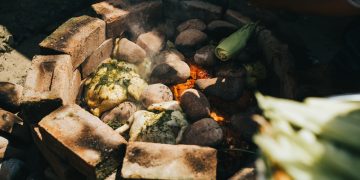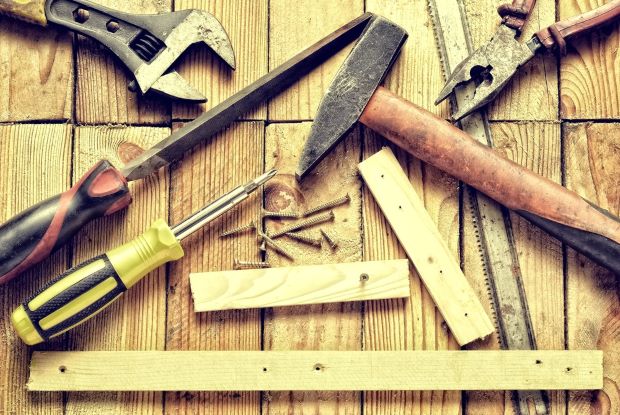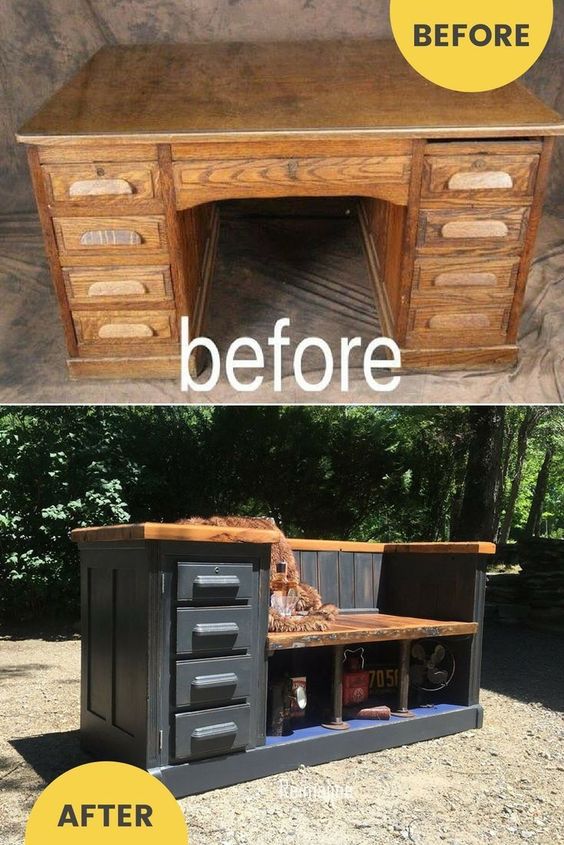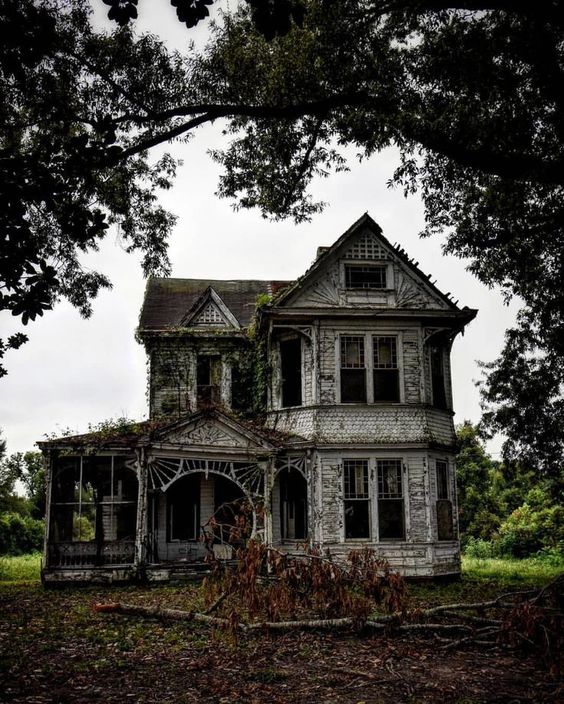I have to make a confession to you… I’m a bit of a gear junkie.
I’m sure you know what I mean. Chances are that you’re one too. It’s an easy habit to fall into. We, gear junkies, tend to get excited when a new piece of gear comes out and we can’t wait to get our hands on it. But there’s a problem with being a gear junkie… even though I can legitimately say that it’s part of my work, paying for all that gear gets expensive.
Here’s the deal though; having all the right gear doesn’t guarantee anyone’s survival. In fact, I’d go so far as to say that having too much dependency on gear can work towards getting you killed; especially if you depend on that gear, instead of learning the skills you need to know, in order to survive.
One important part of survival, which is hardly ever discussed, is the ability to use your head, specifically to use your imagination and be creative. If you’ve ever watched any survival reality TV show, one of the key things you’ve seen the participants doing, is to be creative with what they find. They may not use the things they find in the right way, but you can be sure that they will make use of everything they find, in one way or another.
There’s a word for using things in another way than how they are intended – it’s “repurposing.” This critical survival skill is something we all need to work on. Yes, you read that right; I said that repurposing is a critical survival skill. It’s especially going to be critical if we are ever faced with a TEOTWAWKI event.
In case you’re not used to that term, repurposing is nothing more than finding a new purpose for something, other than the purpose it was created for. It’s the idea behind using plastic containers that food comes in (think margarine tubs) as plastic food storage containers, rather than going out and spending money on buying containers that are made for that purpose.
In a post-disaster situation, there are four general categories of items which we will want to look at repurposing:
- Items we have, which are no longer usable for their original purpose (they don’t work)
- Items we have, which are no longer needed for their original purpose (we don’t do that anymore)
- Items we receive from bartering (I don’t really need that, but I think I can find a way to use it)
- Items we scavenge (hmm, that looks useful)
It Takes Practice
The key to becoming effective at repurposing items is to become proficient at recognizing their potential when you see them. That requires thinking outside the box… sometimes, waaaay outside the box. Seeing what others cannot see.
I was reminded of this recently through a purchase that I made. My wife has needed more dresser space, as the dresser she has is rather small. We had no intention of buying a new bedroom set, as we prefer antique or at least retro styles. Finding such things is hard and when you do find them, they tend to be overly expensive. Considering that it’s just after Christmas, we didn’t have extra money to spend.
Nevertheless, we were visiting one of our local second-hand shops, which we hadn’t been to in a while. While perusing their stock, I noticed a couple of entertainment centers in the store; the kind they have in hotel rooms where they want to hide the television. Since we don’t watch much television, that’s not exactly a high priority purchase for us; but I took a look at them anyway. Thinking outside the box, those entertainment centers looked to me like a great start for a dresser. One fit my wife’s style and I bought it for her.
Keep in mind that it’s necessary to think outside the box, in order to repurpose things effectively. The entertainment center didn’t look like a dresser as it was sitting there in the second-hand store. My wife thought I had lost a marble or two. But here’s what it looks like now, about halfway through the process of transforming it.
The bottom part of the cabinet now holds two drawers, with a third drawer to be added to the bottom of the upper cabinet. This upper cabinet also has three shelves for tops and sweaters, as well as a slide-out (the tray with the edges) for her cosmetics and hair products. The back is still missing, which is why you can see the wall behind it. A mirror will be mounted on the inside of one door and a magnifying mirror will be mounted on the inside of the other. Both mirrors will have lighting, as well as an outlet for plugging in curling irons and hair straighteners.
Ok, so why is this important? Besides keeping my wife happy, and saving a considerable amount of money in the process, I’ve exercised my skills in repurposing, keeping them ready for a time when I will really need them.
Repurposing is both a talent and a skill. Some people are just naturally able to look at things and see an additional purpose in them. The rest of us need to practice. We need to take random items and look at them through the eyes of how we can use them. The more random the items we do this with, the better our skills become.
But there’s another part of this too; that’s the ability to accomplish what you’ve seen. That takes practice too. You have to be willing to make mistakes, then take those mistakes apart and make them again, until you get it right.
Build Your Workshop
In addition to building your handiwork skills, repurposing things and making them into other things also gives you a chance to build up your workshop. Don’t bother buying a lot of power tools, unless you have a need for them now. Rather, concentrate on the hand tools that you’ll have to use in the wake of a disaster. If we don’t have electrical power, all those power tools will be nothing more than paperweights.
I have a fairly extensive workshop on both manual and power tools. But that’s because I use power tools now. I’m always building things, which saves me money from having to go out and buy them. So to me, those tools are an investment; not only in the future but in today as well.
Finding Things to Repurpose
As with any other survival skill, it is useful to start practicing repurposing now. You can start in your own home, specifically with things you are going to throw out. Is there any way you can turn that piece of garbage into something useful?
I do this regularly. Besides the obvious thing of using miscellaneous containers that food comes in, I like to craft things out of otherwise useless items, which might otherwise end up in the trash. Some of these end up nice enough, that I’m able to sell them at local craft sales. I’ve made:
- Medicine cabinets out of old suitcases
- Oil lamps out of dead incandescent light bulbs
- Lamps, using empty wine bottles as lampshades
- Wall shelves, where the shelves were made out of hardcover books
- Hooks to hang stuff out of old silverware
- Serving trays out of old picture frames
- Fireplace logs out of newspaper and other scrap paper from my office
- Educational activity centers for babies out of old hardware
- Storage shelves and containers out of just about anything you can imagine
What’s that? That doesn’t sound like survival gear? Well, it’s not. The point isn’t to just make survival gear, but to learn how to repurpose items. Then, when we need some survival gear, we’ll be ready to do something about it. But, since you insist on things that might be useful for survival, how about these:
- Made my own belt sander out of a motor and some miscellaneous hardware, with a welded metal frame
- Converted an old table into a table saw, using a circular saw to provide power
- Turned a bicycle trailer for hauling children into a carrier for hauling water
- Made a children’s wagon into a rolling seat for gardening
- Made raised garden beds out of old tires and a used bathtub
- Used a piece of railroad track for a blacksmithing anvil
- Built a forge out of an old truck wheel
- Made tables and workbenches out of doors
Looking Beyond Your Borders
There are all sorts of places you can look for things that you can repurpose, making them into other useful things. I made an obstacle course once, using only materials I was able to get from our local scrapyard. There was a wide range of materials there, which I was able to put to good use; and they hardly charged me anything for it.
I’m not the only one who has looked in scrap yards for materials to build things. The Wright Brothers, the ones who built the first viable airplane, were always building things. Before building their first bicycle, which was their main business, they built a printing press, using materials from their local scrapyard.
Those old scrap yards are getting hard to find, but there are lots of second-hand stores around. It’s amazing what you can find in those at times. If you’ve never looked in one, check out your local Habitat for Humanity Re-Store sometime; they usually have a much different assortment of goods, than other second-hand stores do, including a lot of building materials.
Craig’s List and garage sales are also good places to look for things to repurpose. One couple I heard of actually built a cabin in the woods, made entirely out of materials they got for free from Craig’s List. My sister is building a tiny home on wheels, with most of the materials having been found on Craig’s List as well.
Scavenging
When the time comes and we are trying to live off our wits and our skills, we won’t be able to run down to the local building materials center or hardware store for the materials we need, in order to build something. Rather, we’re going to have to scavenge the parts we need, either from things we have or things we can find.
This gets into a touchy moral area – scavenging. The problem is, where do we draw the line between genuine scavenging and looting? Looting is illegal and we should rightly condemn looters for what they are doing. At the same time, our scavenging may look an awful lot like looting to some people; it might even look that way to ourselves and our families.
Here’s the answer I’ve come up with. If there’s any chance that the original owner of the item is going to need it, then it’s looting. It doesn’t’ matter if the owner is there or not. If they aren’t there, there’s still a chance they will come back. Until I’m sure they aren’t coming back, I’ll assume they need whatever they have. This covers situations where people have evacuated, because of a disaster, but will return someday.
The flip side of that coin is that once I’m sure that they won’t be returning, I assume that anything they left behind is available for scavenging. Of course, I’m sure there will be others who won’t wait that long; but as best I can; I will be trying to convince the community that my definition is best.
There will most likely be a lot of people who will die in the aftermath of a TEOTWAWKI event. So there shouldn’t be any shortage of places to scavenge from, without having to resort to looting. There will probably also be a lot of businesses that are abandoned, locked up and left to rot. I’m sure that once things settle down, there will be plenty of places to scavenge from, for just about everything bug food.
Your Scavenging Kit
If you’re going to go scavenging, there are a few things you’re going to need; a kit of sorts, with all the necessary tools to get into places that are locked up and gather what you can use. A few I’d recommend for that kit:
- Some sort of cart for hauling whatever you find
- Sturdy bags, such as burlap sacks, 50 lb. rice and bean bags or sandbags
- Pry bars
- Fireman’s ax or another breaching tool (Gerber makes a good one)
- Box cutters
- Lock pick set (you’ll need some practice on using this)
- Thermite for cutting through metal doors and walls (you can make this yourself)
- Rope
- Road map of the area
- Headlamp w/extra batteries
- Weapons for self-defense
As much as possible, you want to do any scavenging with a team, so that some can be standing guard, while others scavenge. There will be many others out there scavenging, who will be happy to find you busy so that they can take whatever you’ve found.
Don’t Wait, Start Now
While scavenging and repurposing are great survival skills, I’d like to encourage you to start now. While you can’t scavenge things from abandoned homes today, you can from people’s garbage. You’d be amazed by the useful things I’ve found sitting curbside, waiting for the trash truck to come by. I’d say by putting it out there for the trash, whoever owned it is stating they don’t need it anymore.
Scavenging and repurposing can save you a lot of money. The dresser I’m making for my wife, as well as the other repurposing projects I mentioned above, have saved me a lot through the years. This gives me more money for prepping and for other family needs. It has also supplied a number of gifts; things that I have made, which I have been able to give to others. That has saved me money as well.
Ultimately, the more we can save, the more we can do. I like repurposing things, because of what it saves me. While others may think I’m just cheap, I prefer to think of how I’m saving money. I’m just doing things in a budget-friendly way, making my money go just a little bit farther.





























































































Love repurposing. Almost better than buying something new! Since I’m a not real handy, female, now older, I don’t do as much, but I used to make things we didn’t have the money for. Some crafts. I had an old reel from where I worked,(originally held wire). Spray painted it white and used it for various purposes inside and out for years. Last summer I sprayed it with shiny black paint and like it even betteer to hold part of my large aloe plant collection in the living room.
Love the dresser! I appreciate your sentiments about not looting. If it is a disaster or a life-threatening situation, that is different, but under normal circumstances, I think we can always find a way to acquire things honestly, if we put forth a little effort. A clear conscience is the best pillow. As for repurposing: I use plastic food containers for starting seeds. Just hold the bottom over a candle flame for a few seconds to make a small hole for drainage. A bit of newspaper on the inside keeps the dirt from washing out. The lids can be used for trays. I sift my wood ashes to separate out the chunks of charcoal and the nails. I use the ashes to clean my BBQ racks, and also add them to the garden soil. I save the charcoal and use it for BBQ’ing. I salvage the nails. You can bend them into S-hooks or reuse them. Nails that have been through a fire are not as strong as new ones, but are still usable. I gather dry pine cones in the summer and use them for BBQ’ing. Plastic bags can be slipped on over your feet and into leaky boots, to keep your feet dry. Old candles can be melted down, and old cotton rags cut up, rolled up and soaked in the paraffin to make fabulous emergency fire starters. Old 100% cotton bed sheets, cut up into smaller pieces, make superb dish towels and window cleaning cloths. Plastic hangers and clothespins can be used to hang up laundry to dry instead of using the dryer. You can fit a lot of laundry into a small space, as long as you keep a little space between garments for air circulation. An old leaky garden hose can be cut up into 5″ pieces to make handles for 5-gallon buckets.
Lock Picks vary in quality in the open market Place.
Instructional material is at best poor.
Many of the Free Manuals are stolen and leave out background essentials to understand the technique’s.
From going to building Demolition Sites I bought used locks to practice on.
Be aware that companies have built in obstacles to removal and my require Locksmith Tools for removal.
Any Picking Tools require Modification to function properly.
Additionally By-Pass techniques don’t need Pick Tools.
These are the shortcuts Locksmiths use to open a Lock without Keys –such as the Linkage to the Deadbolt or Latch.
It makes me laugh at the prevailing Crap sold as Lock Picks !
Basic Locksmithing and Re-Pining is needed to understand the Picking, and Bypassing Techniques.
High Time for real manuals or trainers to teach techniques —not do it yourself crap of Holding a Padlock in your hand with a comfortable position and Picking it that way. When is Picking a real Lock in a comfortable position LOL
Excellent article – thank you.
I have been repurposing for most of my life. I naturally look at things differently to see new possibilities. I have bought tons of stuff at yard sales for next to nothing that have gone into my preps. 3 years ago I bought a full size 100% Pendleton wool blanket for $2. I have gotten shooting supplies and cooking gear and furniture I have made into something entirely different. Saving “trash” items such as paper rolls and pieces of wax and wire and other apparently useless items has enabled me to put together survival tools for which others pay big bucks.
Having sewing, weaving, woodworking, beading, crochet and knitting, and other “making” skills have stood me in good stead and will be valuable to myself and others in coming hard times. The more skills you can develop and hone, the better your chances are at successful survival in all situations. Planning is so important in all of our survival efforts. Way underrated! Plan for the worst so you can have the best chances even in good times.